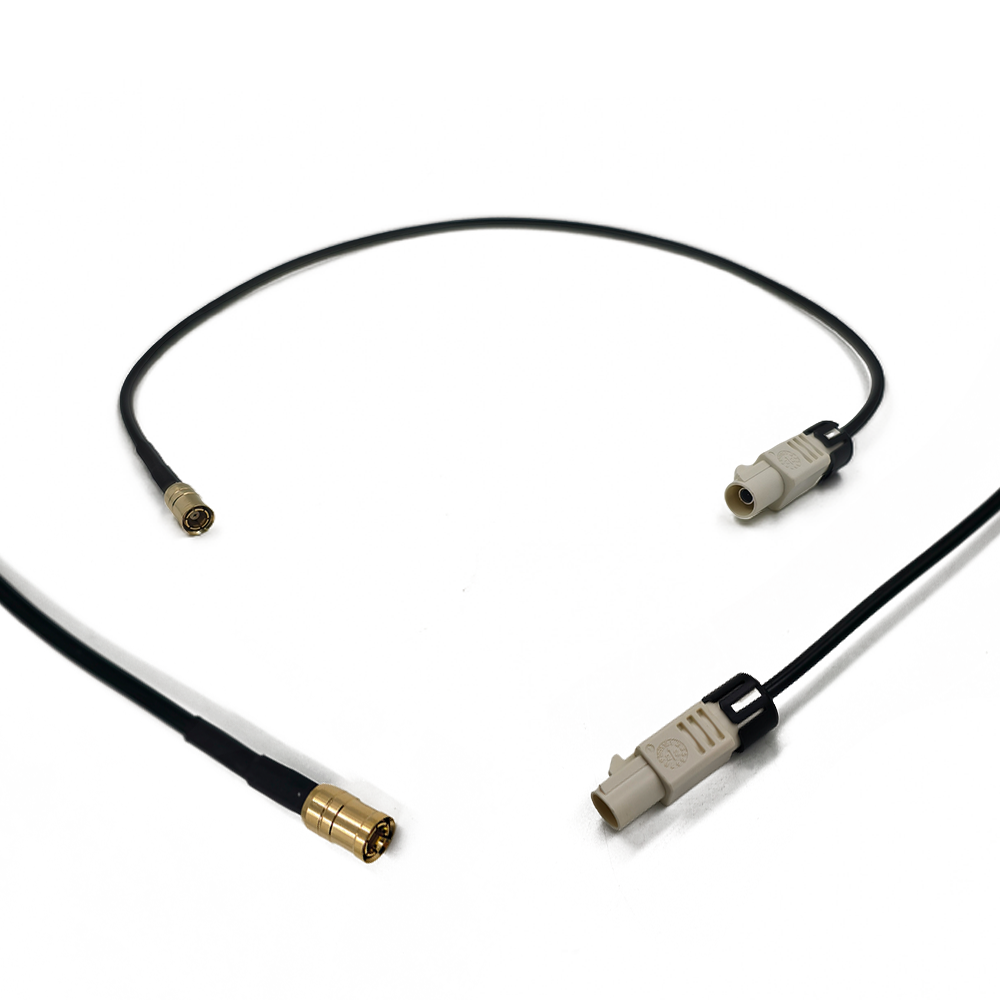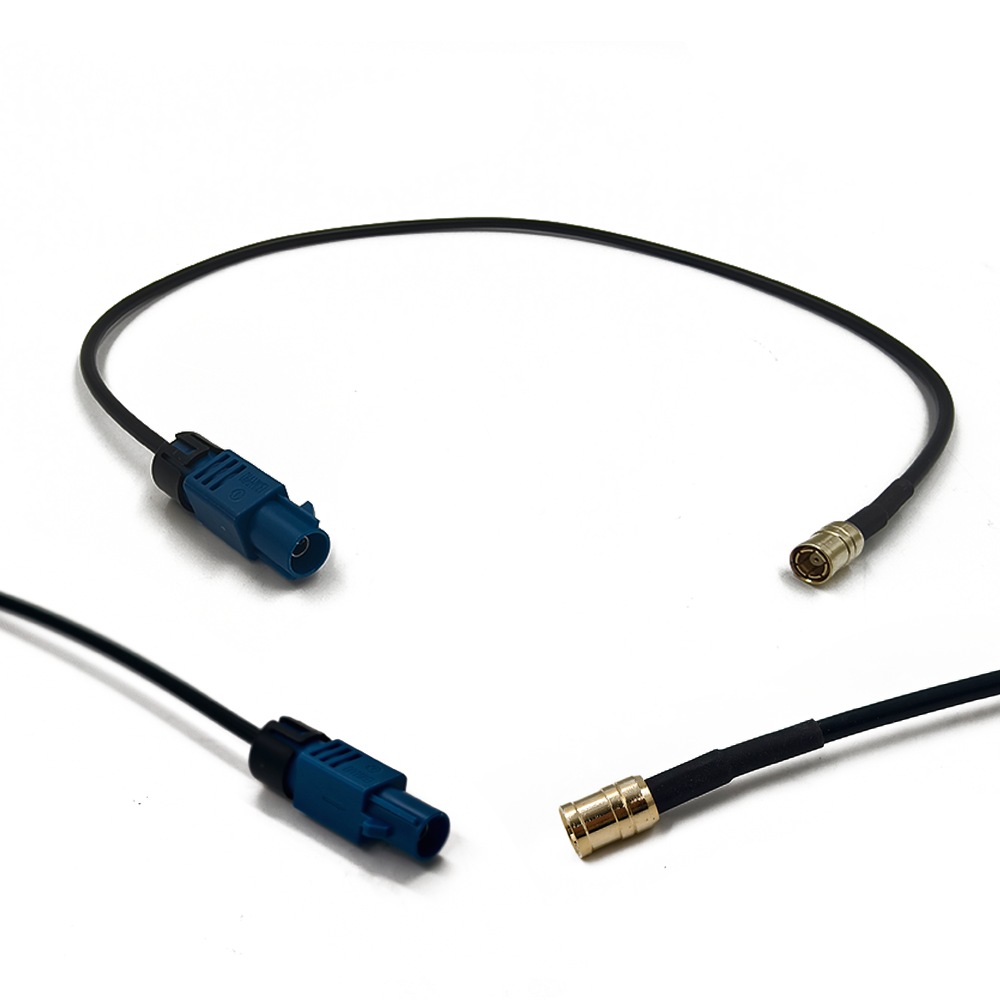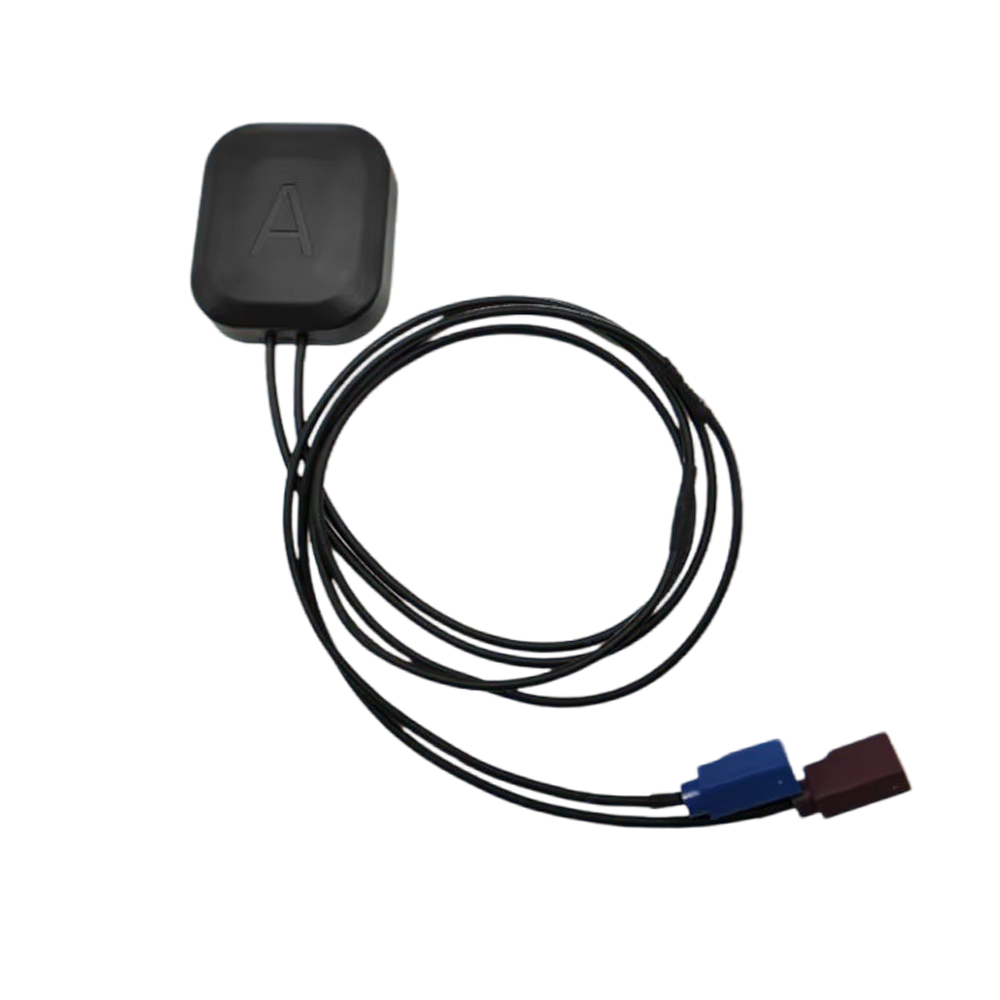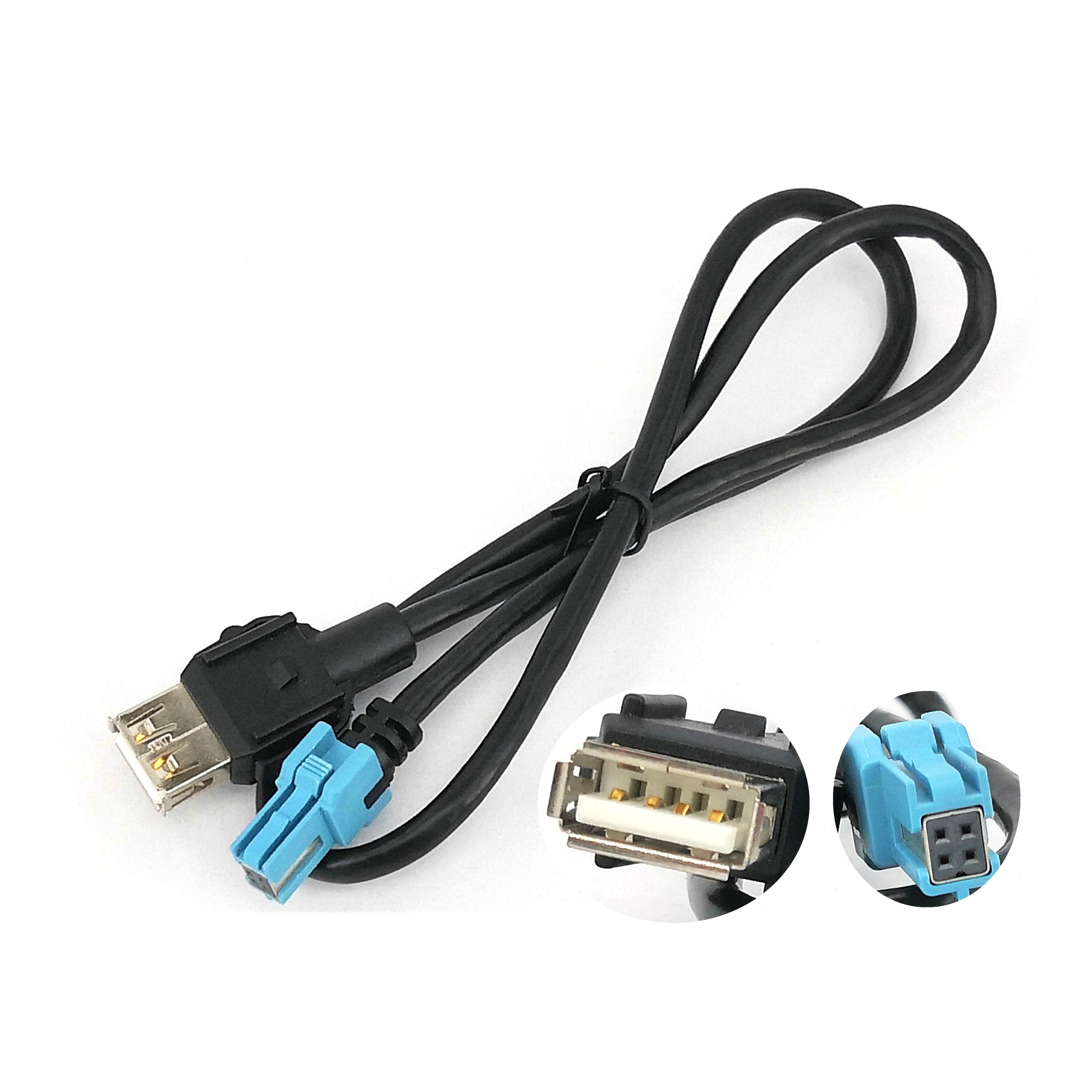At the heart of the FAKRA GPS Antenna’s performance is the 7-conductor configuration of its wiring harness. This multi-conductor design is far from arbitrary; it is tailored to support the complex needs of modern automotive GPS systems, which often require more than just a single signal path. While one conductor is dedicated to the primary GPS signal (operating at frequencies like 1575.42 MHz for GPS L1), the remaining six conductors serve critical auxiliary functions. These may include power delivery to active antenna components (such as low-noise amplifiers, LNAs), ground connections to minimize electromagnetic interference (EMI), and data lines for communication between the antenna and the vehicle’s infotainment or ADAS control units. For example, in vehicles equipped with real-time traffic updates or GNSS-augmented ADAS features (like lane-keeping assist), separate conductors ensure that power and data flow independently of the GPS signal, preventing crosstalk and signal degradation. This redundancy and separation of functions are essential in automotive environments, where electrical noise from engines, alternators, and other systems can disrupt sensitive RF signals.
The choice of RG174 wire type for the harness is a testament to its suitability for high-frequency GPS applications. RG174 is a coaxial cable renowned for its compact size, flexibility, and excellent electrical performance at RF frequencies—qualities that make it ideal for automotive use. Its construction includes a solid copper-clad steel center conductor, a dielectric insulator, a braided copper shield (providing 90%+ coverage), and a PVC outer jacket. This design ensures that the GPS signal—vulnerable to EMI from the vehicle’s electrical systems—is protected from interference. The braided shield acts as a barrier, preventing external noise from infiltrating the signal and also containing the GPS signal within the cable to avoid interfering with other vehicle electronics. The flexibility of RG174 is particularly valuable in automotive installations, where the harness must be routed through tight spaces, around panels, and between components without kinking or damaging the cable. This flexibility simplifies installation in diverse vehicle models, from compact cars to large trucks, ensuring that the antenna can be mounted in optimal locations (such as the roof or windshield) while the harness connects to the receiver in the dashboard or trunk.
The 4-pin blue male to brown female mini FAKRA connectors are a defining feature that ensures secure, standardized connectivity between the antenna and the vehicle’s GPS receiver. FAKRA (Fachkreis Automobil) connectors are industry-standard in automotive electronics, developed to withstand the harsh conditions of vehicle operation—including vibration, temperature extremes, and exposure to moisture and chemicals. The color-coding (blue and brown) is not merely aesthetic; it serves a critical purpose in preventing incorrect connections. Blue and brown are specific to certain signal types or voltage levels in FAKRA specifications, ensuring that the GPS antenna is mated only with compatible receivers. This reduces the risk of damage to components due to incorrect wiring and simplifies assembly in manufacturing facilities. The “mini” designation indicates a compact form factor, which is essential in modern vehicles where space is at a premium. The connectors feature a snap-lock mechanism that ensures a secure fit, even during vehicle vibration (common in off-road or high-speed driving), preventing intermittent signal loss that could disrupt navigation. Additionally, the FAKRA standard ensures interoperability across manufacturers, meaning that the antenna can be used with receivers from different suppliers, enhancing flexibility for automakers.
The harness length of 730mm (with customization options) balances practical installation needs with signal integrity. In most vehicles, the GPS antenna is mounted on the roof, rear windshield, or front pillar—locations that provide unobstructed views of the sky—while the receiver is typically located in the dashboard or trunk. A 730mm length allows for routing the harness through the vehicle’s body without excessive slack (which can lead to tangling or interference with moving parts) or tension (which can strain connectors). Customizable length options accommodate different vehicle designs, from small hatchbacks to long-wheelbase trucks, ensuring that the harness can be tailored to specific installation requirements. Importantly, RG174’s low signal loss at GPS frequencies (typically 0.5 dB/m at 1.5 GHz) means that even at 730mm, signal attenuation is minimal—less than 0.4 dB—ensuring that the receiver receives a strong, clear signal. This is critical for maintaining positioning accuracy, as even small signal losses can reduce the receiver’s ability to lock onto weak satellite signals, particularly in urban canyons or under dense foliage.
The operating and storage temperature range of -40°C to +85°C underscores the harness’s durability in extreme environments. Vehicles operate in diverse climates, from the freezing temperatures of Siberian winters to the scorching heat of Middle Eastern summers, and the wiring harness must perform reliably across this range. The materials used in the RG174 cable and FAKRA connectors are selected to withstand these extremes: the PVC jacket of the cable remains flexible at low temperatures and resistant to melting at high temperatures, while the connector housings (typically made from high-temperature plastics like PBT) do not crack or warp. The metal components of the connectors (such as the pins and shields) are plated to resist corrosion, ensuring that conductivity is maintained even in humid or salty environments (e.g., coastal regions). This temperature tolerance also extends to storage, meaning that vehicles can be shipped or stored in unheated warehouses or exposed to direct sunlight without compromising the harness’s performance once the vehicle is put into operation.
The customizable color options (blue and brown as standard) offer both functional and practical benefits. Beyond the color-coding of the FAKRA connectors, the outer jacket of the harness can be customized to match vehicle interior colors or to indicate specific functions, aiding in identification during installation and maintenance. For example, a brown jacket might be used to distinguish the GPS harness from other cables (such as those for radar or cameras) in the vehicle’s wiring loom, reducing the risk of accidental damage during repairs. In fleet vehicles or commercial trucks, color customization can help fleet managers quickly identify vehicles equipped with specific GPS systems, streamlining maintenance and upgrades. While aesthetics are a secondary consideration, a harness that blends with the vehicle’s interior or under-hood components can also improve perceived quality, a factor automakers consider in customer satisfaction.
In practical automotive applications, the FAKRA GPS Antenna’s wiring harness plays a pivotal role in ensuring reliable navigation and safety. For everyday drivers, it enables features like turn-by-turn directions, real-time traffic updates, and location-based services (such as finding nearby gas stations). The harness’s EMI protection ensures that these features remain functional even when the vehicle’s engine is running or other electronics (like heated seats or windshield wipers) are in use. In commercial vehicles, such as delivery trucks or emergency services vehicles, the reliability of the GPS signal is critical for route optimization, fleet tracking, and dispatch efficiency. The 7-conductor design supports integration with telematics systems, allowing fleet managers to monitor vehicle locations, speeds, and driver behavior in real time.
For advanced driver-assistance systems (ADAS) and semi-autonomous vehicles, the harness’s performance is even more critical. Features like adaptive cruise control, automatic emergency braking, and GPS-augmented positioning (for precise lane centering) depend on accurate, low-latency GNSS data. The separation of power, ground, and signal conductors in the 7-conductor harness ensures that these systems receive consistent, interference-free data, reducing the risk of errors that could compromise safety. In fully autonomous vehicles, where GNSS is often combined with other sensors (like LiDAR and cameras), the harness’s role in delivering reliable positioning data becomes part of a redundant system that ensures safe operation.
The harness’s resistance to vibration is another key attribute in automotive applications. Vehicles experience constant vibration from engines, road surfaces, and wind, which can loosen connectors or fatigue cables over time. The FAKRA connectors’ snap-lock mechanism and the RG174 cable’s flexible construction mitigate this risk. The braided shield, in addition to EMI protection, adds mechanical strength to the cable, preventing breakage of the center conductor due to repeated bending or vibration. This durability ensures that the antenna remains functional throughout the vehicle’s lifespan, reducing warranty claims and maintenance costs for automakers and owners.
Looking to the future, as vehicles become more connected and autonomous, the role of the FAKRA GPS Antenna harness will evolve to meet new demands. Next-generation GNSS systems (such as Galileo and BeiDou) and higher-frequency bands (like GPS L5 for improved accuracy) will require harnesses that maintain signal integrity at higher frequencies. The RG174 cable’s performance at these frequencies, combined with the FAKRA connectors’ compatibility with advanced receivers, positions the harness to support these advancements. Additionally, the 7-conductor design can accommodate new features, such as 5G-augmented GNSS or multi-constellation receivers, by providing additional conductors for power and data. As vehicles integrate more sensors and communication systems, the need for EMI-protected, reliable wiring harnesses will only grow, making the FAKRA GPS Antenna harness a critical component in the automotive electronics ecosystem.
In conclusion, the FAKRA GPS Antenna, with its specialized car automotive FAKRA HSVL wiring harness, represents the fusion of precision engineering and automotive practicality. The 7-conductor configuration, RG174 cabling, color-coded FAKRA connectors, and wide temperature tolerance ensure that GPS signals are transmitted reliably, even in the challenging environment of a vehicle. Whether enabling everyday navigation for drivers, supporting fleet management systems, or powering advanced ADAS features, this harness plays a vital role in keeping vehicles connected, safe, and on track. As automotive technology continues to advance, the FAKRA GPS Antenna harness will remain a cornerstone of reliable GNSS performance, adapting to new frequencies, features, and vehicle designs while maintaining the durability and efficiency that define its design.




































































 Language
Language
 En
En Cn
Cn Korean
Korean

 Home >
Home > 








 18665803017 (Macro)
18665803017 (Macro)













